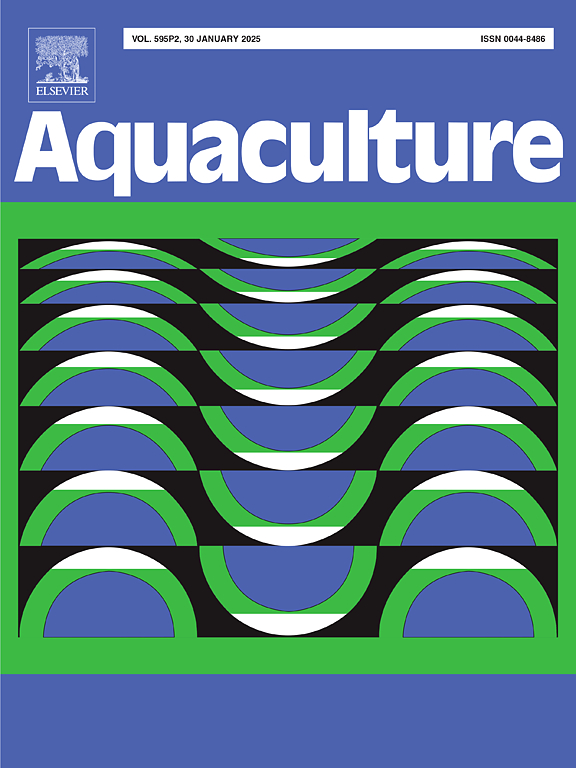Identification of a novel strain of carp edema virus affecting Songpu mirror carp in Liaoning, China
IF 3.9
1区 农林科学
Q1 FISHERIES
引用次数: 0
Abstract
Carp edema virus disease (CEVD), also referred to as koi sleepy disease (KSD), is a viral infectious disease caused by the carp edema virus (CEV). It is primarily characterized by lethargy, generalized edema, and gill hyperplasia and necrosis. The disease has a widespread distribution and is associated with high mortality, leading to significant economic losses within the carp aquaculture industry. This study aims to identify the pathogenic agents affecting Songpu mirror carp (Cyprinus carpio Songpu) from a carp farm experiencing elevated mortality rates in Liaoning Province, China, which experienced elevated mortality in late May 2018. Bacterial and parasitic infections were systematically excluded, and the presence of CEV infection in Songpu mirror carp was confirmed through nested PCR identification. The isolate was named CEV L-3 strain. The p4a partial gene sequence obtained was analyzed, which revealed that L-3 strain exhibits the highest homology compared with the UK isolate R083, which is classified within the IIa genotype. It was observed that the L-3 strain demonstrates a closer phylogenetic relationship to M141 from the UK and 112–2015 from Poland. Additionally, the gills were identified as the target organ of the L-3 strain by real-time PCR, which exhibited the highest viral load, followed by the kidney and spleen. This study has identified a novel strain of CEV which is prevalent in China, thereby paving the way for further research into the epidemiological characteristics, diagnostics and viral biological properties of CEVD.
求助全文
约1分钟内获得全文
求助全文
来源期刊

Aquaculture
农林科学-海洋与淡水生物学
CiteScore
8.60
自引率
17.80%
发文量
1246
审稿时长
56 days
期刊介绍:
Aquaculture is an international journal for the exploration, improvement and management of all freshwater and marine food resources. It publishes novel and innovative research of world-wide interest on farming of aquatic organisms, which includes finfish, mollusks, crustaceans and aquatic plants for human consumption. Research on ornamentals is not a focus of the Journal. Aquaculture only publishes papers with a clear relevance to improving aquaculture practices or a potential application.
 求助内容:
求助内容: 应助结果提醒方式:
应助结果提醒方式:


